Interior Design Alliance
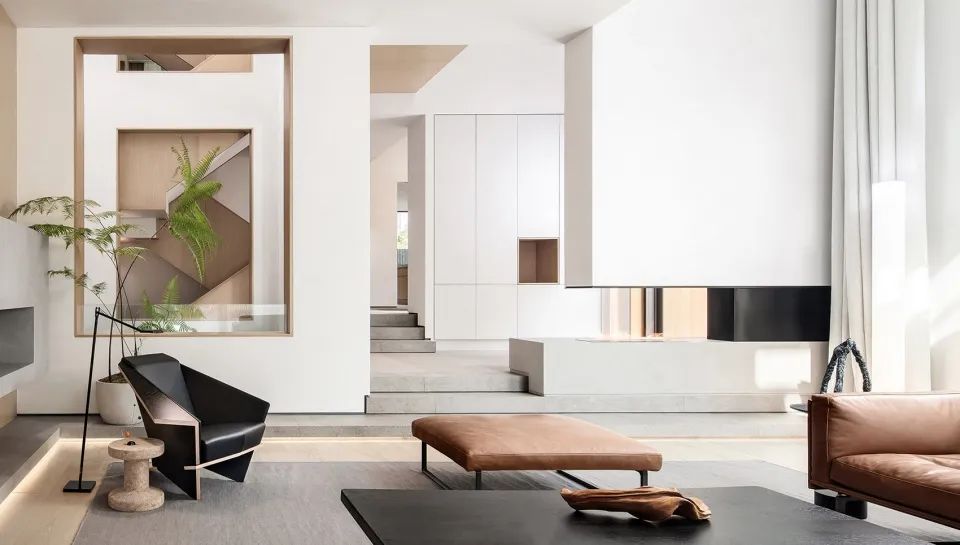
As the saying goes, “details determine success or failure”. For the design, perhaps a way of closure that you do not seem to understand, just insignificant details, will let the potential opportunities slip away. An excellent closure will be the finishing touch to your design, and will be the highlight of the decoration.
We all know the undeniable importance of the header in design and construction, but how do you make it work for your design with half the effort? How to properly think about the logic of the thinking of the edge closure? Let’s talk about it today, mainly to solve the following problems.
- What is hemming?
- What are the forms of hemming?
- How to apply the hemming to the practical?
- The design points of the closure problem.
01.
What is hemming?
a.Definition of hemming
The closure is the construction process and practice at the intersection of different or the same material. Through the finish hemming, the splice joints and closure joints of the edges, corners and articulated parts are processed.
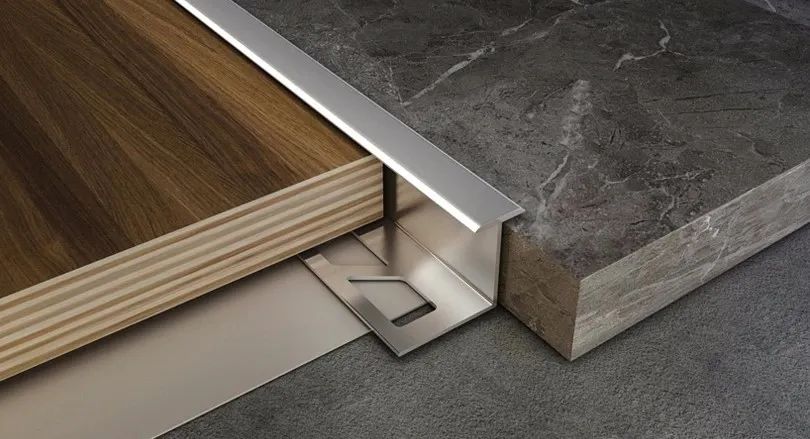
▲Z-shaped hemming strip
In addition, cover with finishing materials and avoid the exposure of grass-roots materials to achieve the shortcomings of the finishing decoration, or use special materials to decorate the transition parts between decorative surfaces to increase the decorative effect.
b.Principle of closure
Sealing seems simple, but the actual construction will not be lack of a variety of wrong way. The most commonly encountered is the case of uncompact or inappropriate closure, as shown in the following figure.
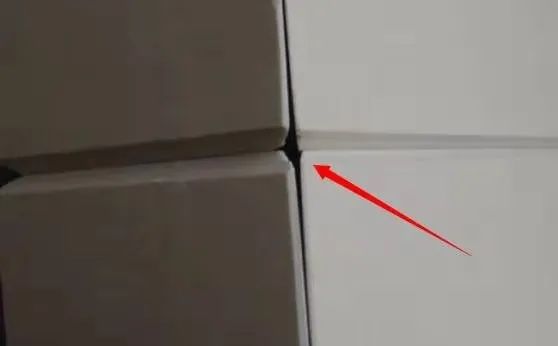
▲ stone in the corner to leave a gap.
Stone yin and Yang corner construction should be 45 ° angle (need factory processing)
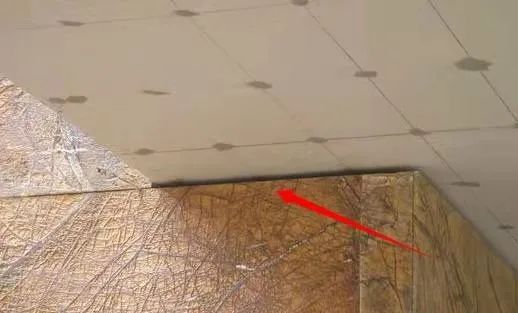
▲Wall stone layout.
The stone and top surface gap is too large
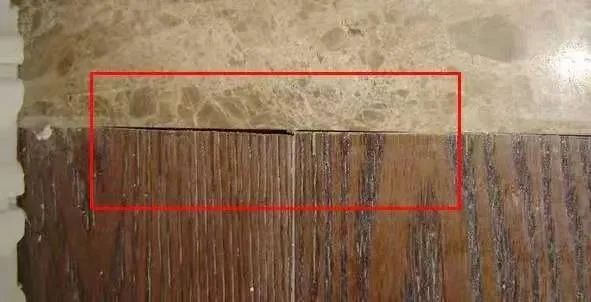
The stone is not suitable for the flooring, and should be added to the closure.
The first thing you need to do is to look at the design around you and look for these “problems” that can be seen everywhere.
There may be partners for some details of the design, just feel that it does not look beautiful, uncomfortable. How to deal with the specific is not quite clear, or know where the “problem”, but not the right way to solve.
① Natural closure law.
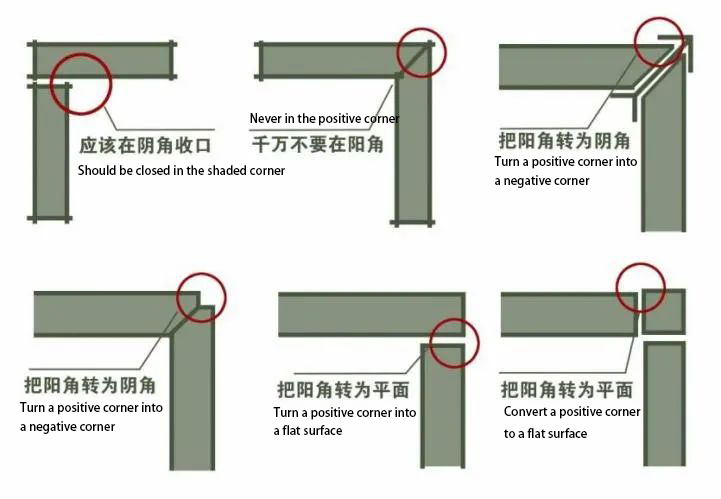
Whether it is the edge or the closure, the best effect is the natural flow of the transition of different material articulation. Want to be able to “shame” members of the opening or base, but also “beautiful” to enhance the decorative effect, the skills should be used up.
Handling tips: all the closure, should be placed in the shaded corner position. The first thing you need to do is to make sure that you have a good idea of what you are doing.
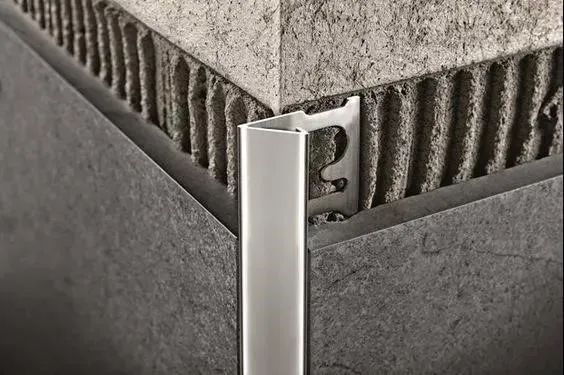
▲Yang corner hemming strip
②Principles for judging the closing.
1) Design effect: Consider the beauty, difficulty and denseness of the design to adopt a suitable way for the closure.
2) Nature of material: Select the suitable way of closure according to the material to ensure the coordination and proportionality of the shape.
3) Cost control: Do not pursue fancy and complicated closure methods, and use simple and suitable closure methods under the premise of ensuring the design effect.
02.
The common form of closure
General home decorating closure is divided into 3 kinds: pure ground closure, pure wall closure, wall and ground closure. And the closure can be divided into 5 major categories according to the form: pressure strip, gluing, leaving seams, staggered seams, and collision.

▲ Form of closure
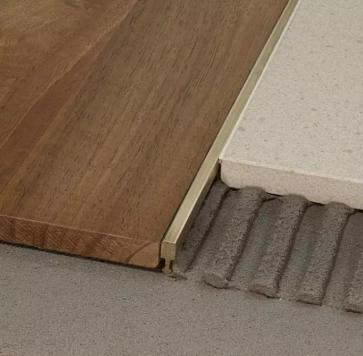
▲Pure ground
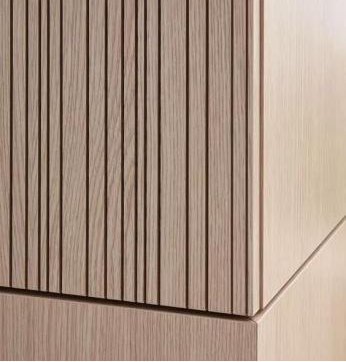
▲Pure wall
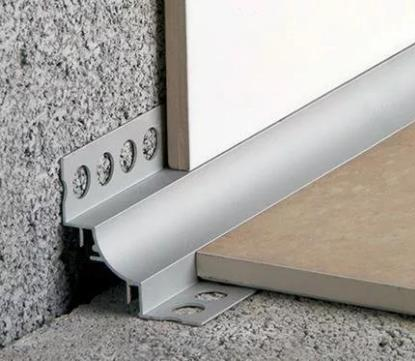
▲Wall and ground
a. Crimping

▲Pressing bar schematic
The press strip is one of the most used methods in the whole decorative closure because of its simple construction, low cost and beautiful effect.
The press strips are also divided into separating strips, crimping strips, sheathing lines, corner protectors, decorative strips and other components. They are widely used in material division, yin and Yang corner closure, edge closure, modeling decoration and other scenes of edge closure.
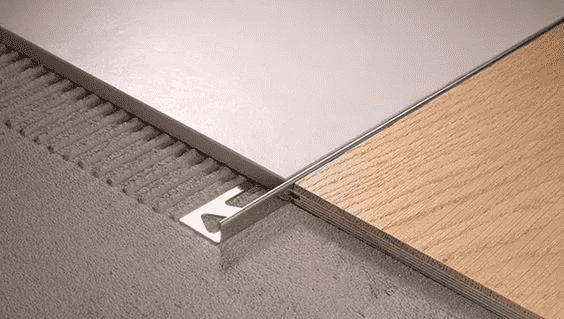
b.Leave seam

▲Staying seam schematic
The treatment technique of leaving a seam is to leave a gap between the material and the material to transition, which is applicable to the division of the decorative surface with larger area and the plane butt of two materials. It can deal with the expansion and contraction joints of space, as well as increase the sense of space hierarchy.
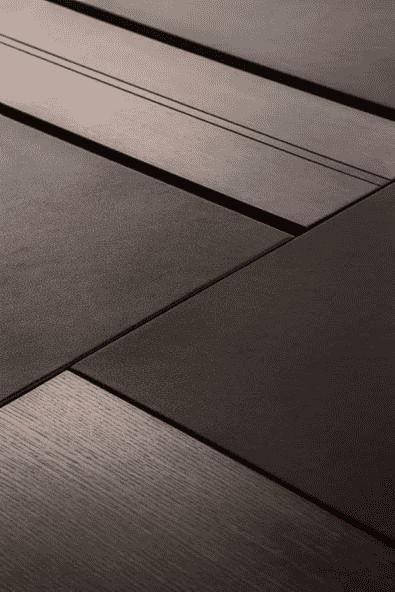
c.Staggered seam

▲Staggered seam illustration
The staggered seam, also known as the high-low gap closure, is the two sides of the material is not closed in a plane.
It is more suitable for direct use for closure when two materials cannot be made flat.
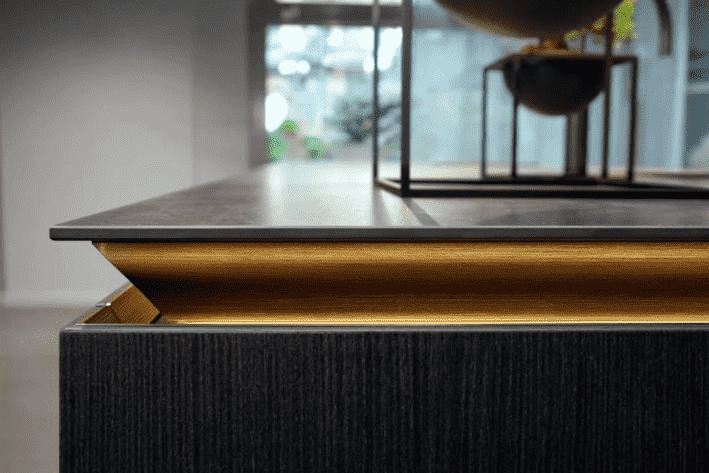
d.Collision

▲Collision schematic
The buttress is also called a close seam, which is an extended version of the stay seam. It directly affixes the materials together to create the feeling of a whole piece of uniform material.
The seam will increase the cost and construction difficulty, so the size of the seam between the vertical and horizontal needs to be strictly controlled when using the seam treatment, especially the area that can be clearly visible in the field of vision.
This practice is often used in the metal material of the close seam processing and the large surface modeling integrity requirements (such as: large stone pattern, wood finish pattern, metal engraving, etc.) used.
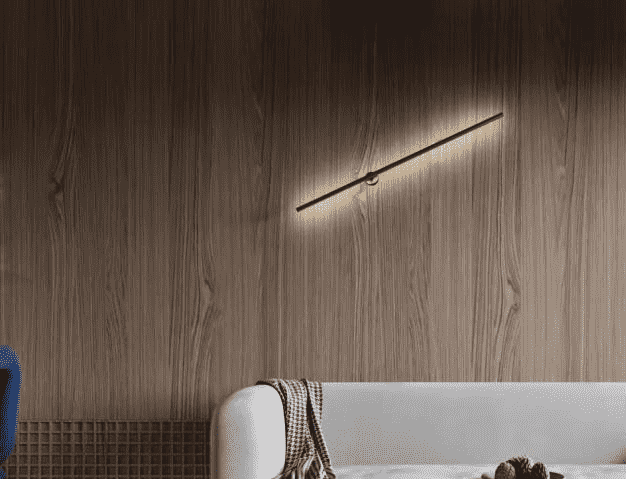
e.Gluing

▲Gluing
Gluing can cover up almost all the defects in the decorative closure, but the durability of gluing is not high, easy to yellowing.
Use scenario: When using other methods of closure, there are defects, revealing the grassroots, sealing is not tight, can be remedied by means of gluing.
Reminder: Gluing is only to cover up the defects, not to show the beauty of the details of the closure. It is generally not recommended to use.
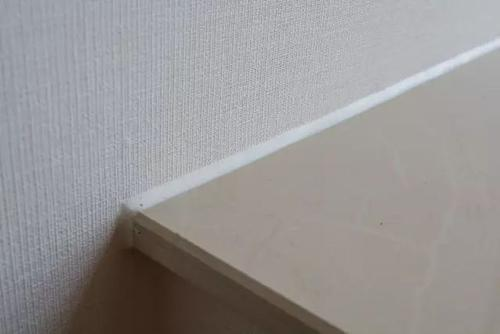
These five types of closure is the bottom logic, not independent of each other. When you actually use it, you can use it alone or with each other.
03.
The practical application of the closure
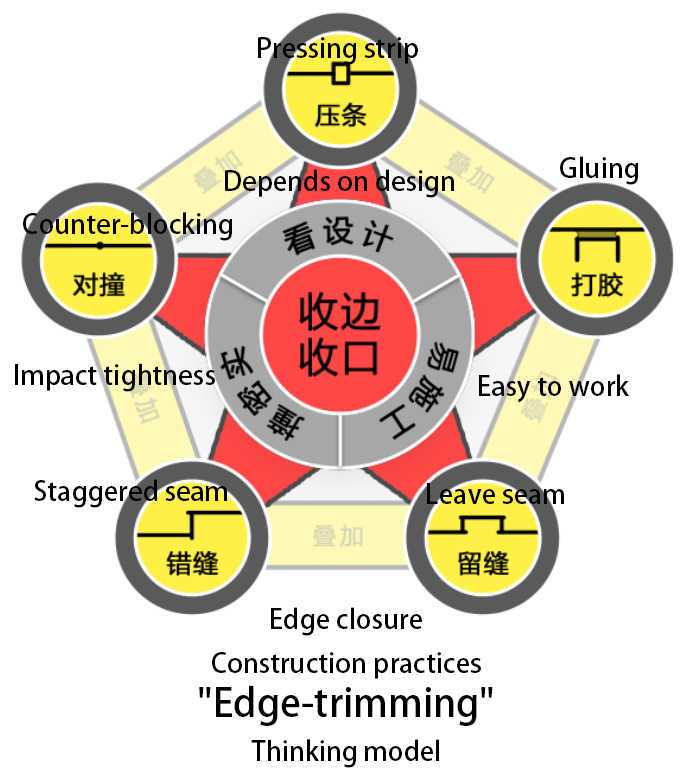
After learning the above five types of closure methods, how to use it in practice? Let’s take an example.
a. Door head at the corner of the closing problem
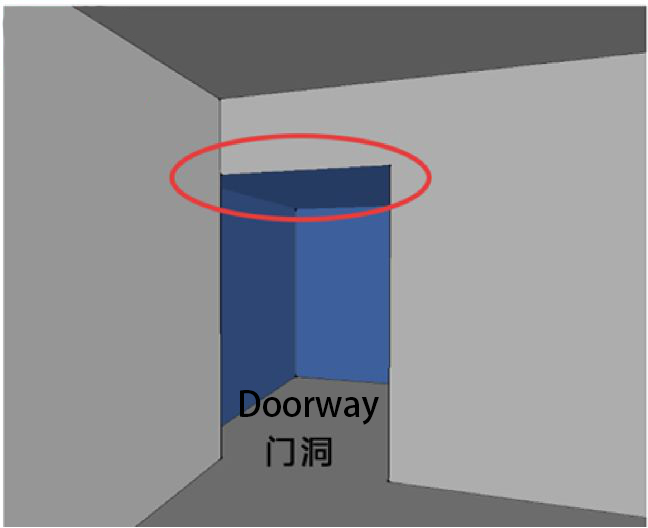
This problem is a more classic closure “problem”, prone to many details of the problem. Next, we through the “edge closure” thinking model to provide the 3 kinds of problem solving routines. In this way, a practical solution to the problem of closing at the door head yang corner.
Solution 1: Staggered seams
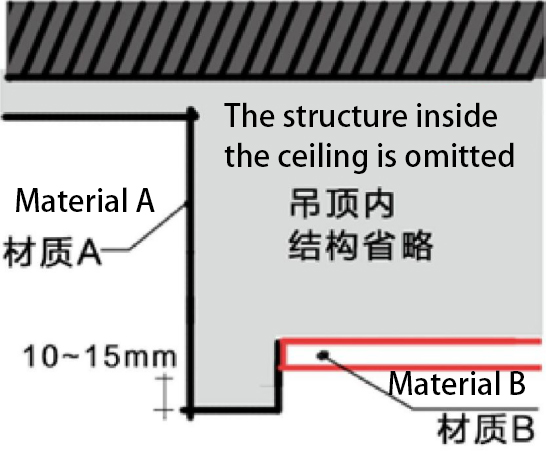
Lower the high ceiling slightly, so that the relationship between the two ceilings to form a staggered seam, this is the simplest and lowest cost solution.
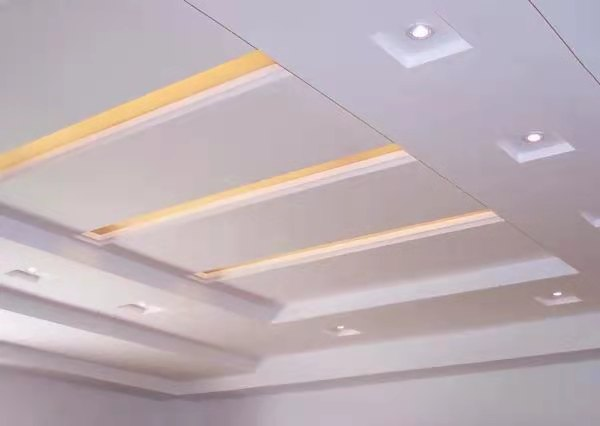
Solution 2: Pressure strip
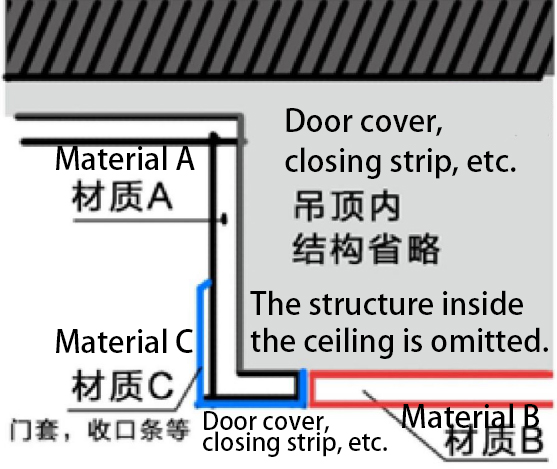
Add a strip at the corner of the raised ceiling to make it flush with the lower ceiling.
The strip can be an exposed stainless steel strip, a corner guard strip covered by latex paint, or a door set line.
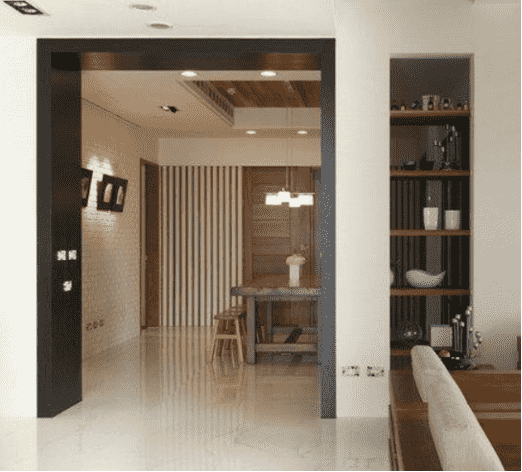
Solution 3: Leave a gap
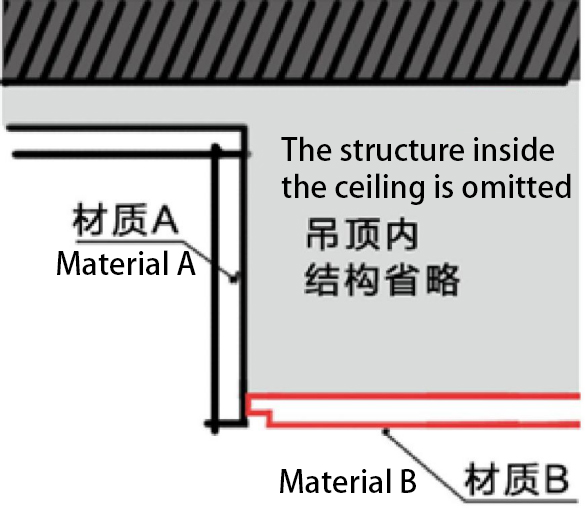
Let the high and low ceiling use a gap (craft seam) to natural transition, so that this gap to disguise the shortage of this place, to play a beautiful role, but also to achieve the purpose of the closure.
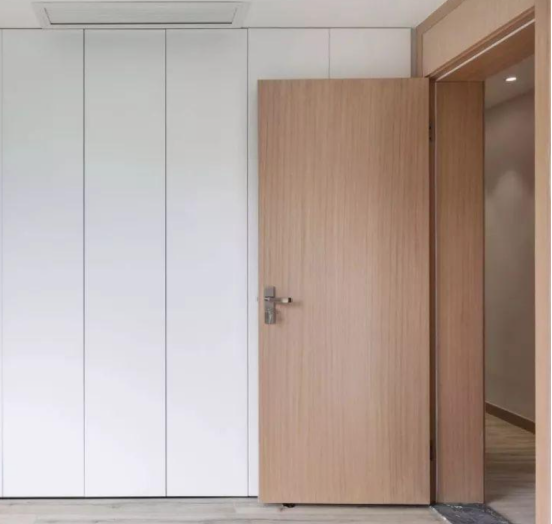
b.Metal waistline closure problem
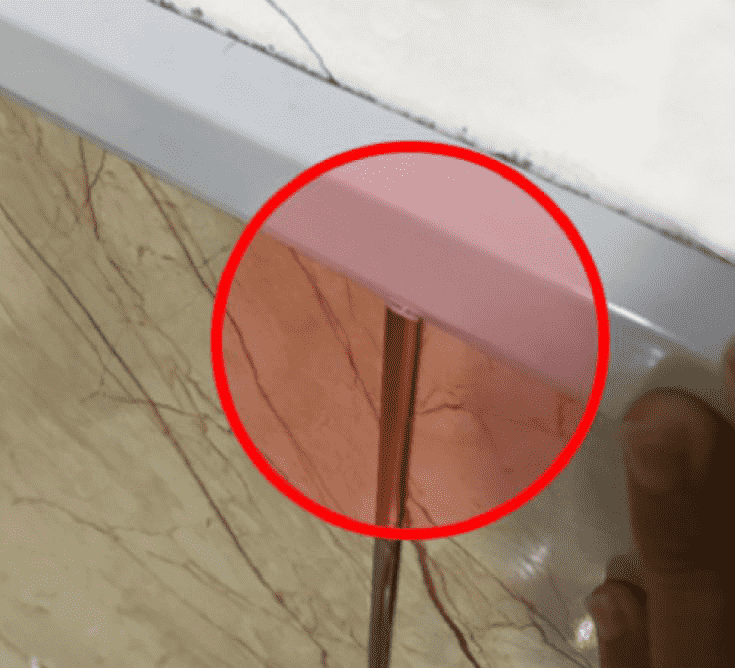
Analysis of the problem: stainless steel and hemming strip closure relationship is not clear, resulting in the hemming strip does not cover the metal strip.
Solution 1: pressure strip
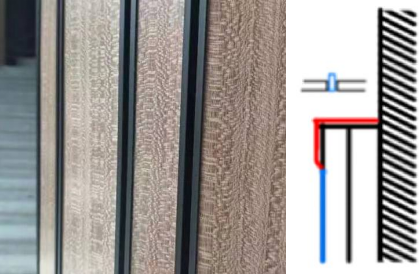
The pressure strip is the stainless steel strip directly embedded in the finish material, so that they form a whole. However, this method requires the straightness of the trim.
Solution 2: Collision
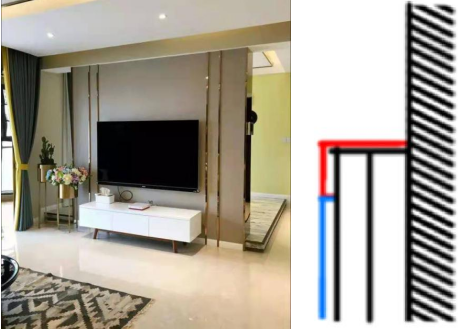
Collision is to let the edge of the strip and the stainless steel strip in the same plane, this method requires high precision on the edge of the strip.
Solution 3: Wrong seam
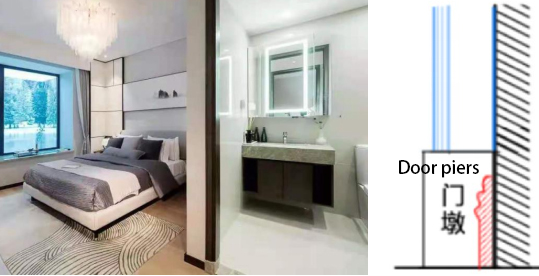
Let the edge of the stainless steel strip off, this method is less difficult to construct, and low construction costs. But it will make the finish convex, need to get the designer to confirm.
c. Door cover line and skirting line closure problem
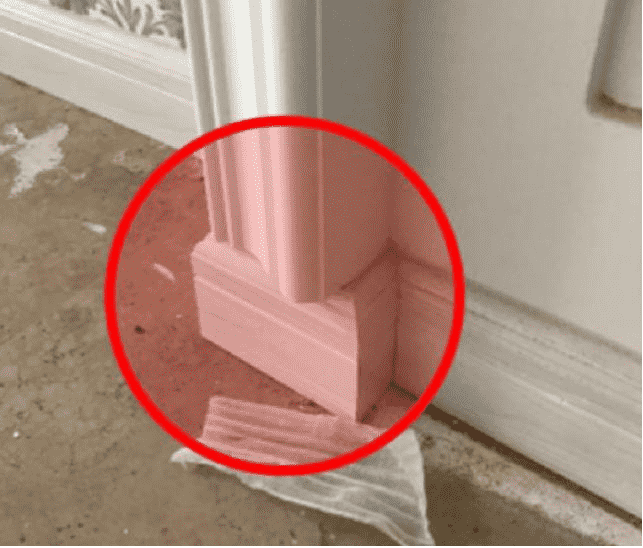
Analysis of the problem: the door cover line and skirting the wrong relationship between the closure
Solution 1: Collision
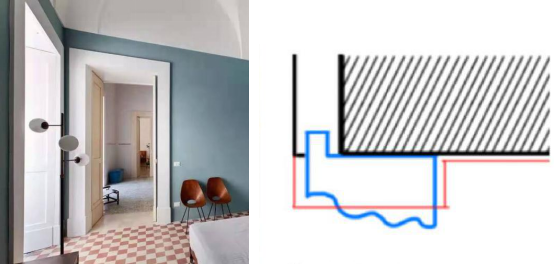
The skirting line is lengthened or replaced with door piers, which is the most common way to solve.
Solution 2: Special treatment
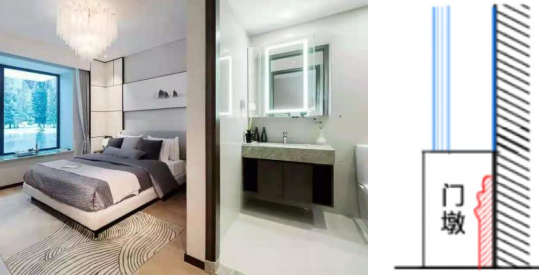
If it is in the area with water, you can add stone piers below the set line for closure.
Solution 3: Collision (corner cutting)
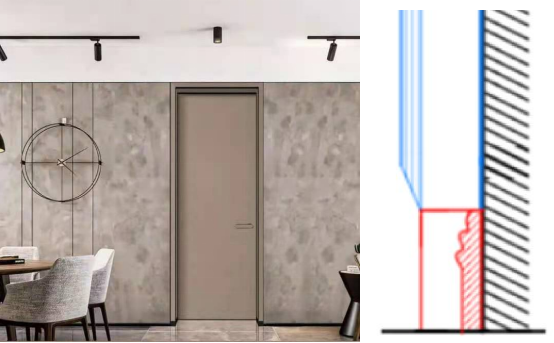
In the case of the door pier remains unchanged, the set line 45 ° cut angle, so that the set line and the completed door pier collision. This is the most cost-saving solution.
04.
Design points of the closing problem
a.Relationship between materials
At the intersection of materials, especially the yin and Yang corners and different materials of the closure, should be clear between the materials who presses who, who receives who the logical relationship.
Such as: stone and wood flooring metal crimp closure, wood veneer panel and stone collision closure, wood veneer and wallpaper plus inlay closure.
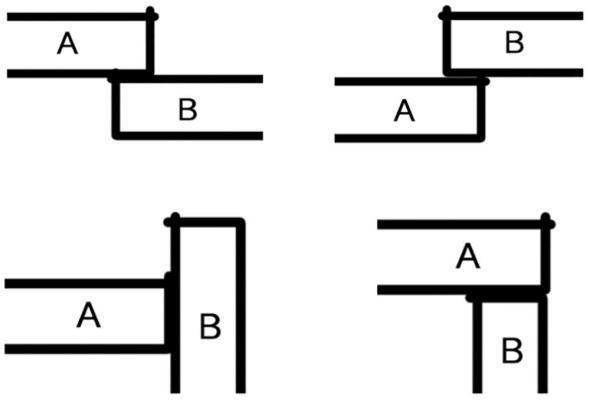
▲Holding schematic
b. Treatment of construction details
In the different construction of the details of the closure, focus on whether the seam is aligned, whether the closure is bumped tightly, whether there is a possible leakage of seams, etc.?
As well as construction control details, focus on checking the seam alignment of the closure and the interface dense.
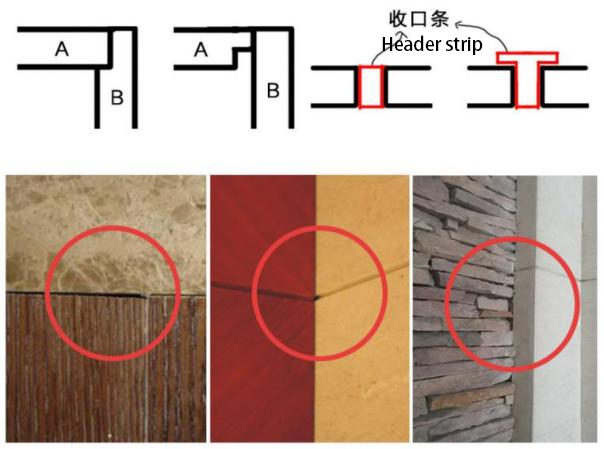
Targeted inspection of doors and windows, threshold closure spacing and height discrepancies, tiles, walls, floors, kicks to the seam situation. Also check the closing of the bathroom floor drain, the ground and skirting and wall corners of the closing, etc.
c. The environment of reflective materials
In the vicinity of mirrors, glass, high-gloss finish materials, check whether there is a light source, whether it will reflect the grassroots situation of the closing?
If so, care should be taken to shade the light or grossing finish material to avoid the risk of leakage of light beads.
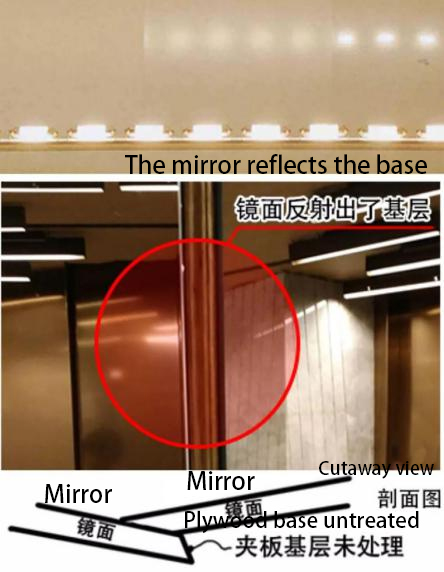
Summary.
Well, the content of the edge closure is explained to you here first. The problem of closure in the actual construction in fact more than these, but the underlying logic is the same. When you encounter problems, you can apply the “edge closure” thinking model. This will definitely help you.

 WOWOW Faucets
WOWOW Faucets





您好!Please sign in